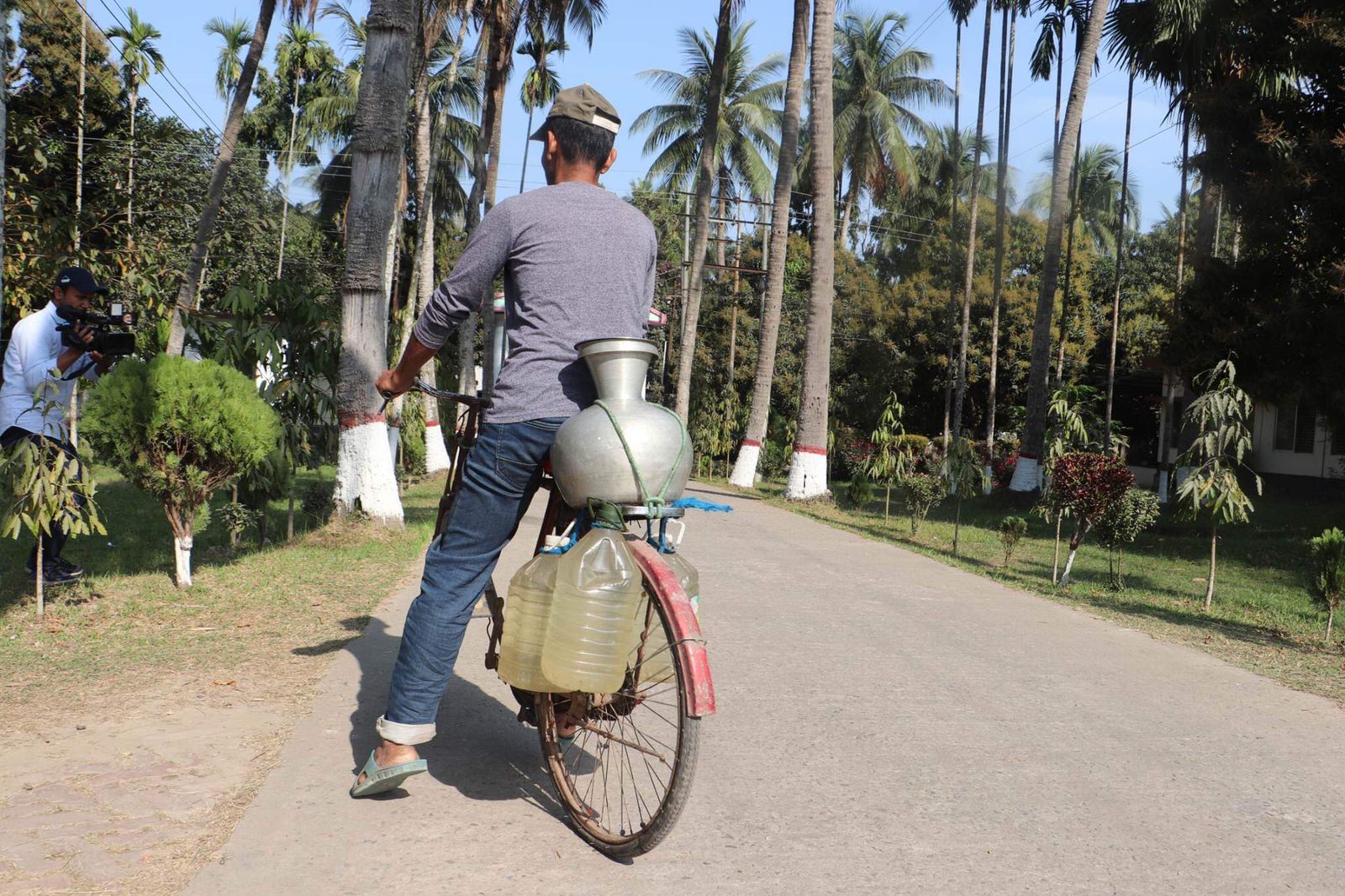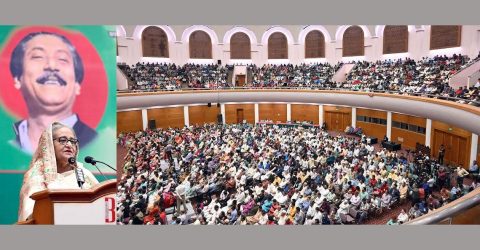The life story of those who are sad in brackish water!
"They are disoriented by the invasion of salt water"
The Bangladesh The Bangladesh
Today

Pinky Akter : Brackish water intrusion on the southwest coast of Bangladesh. Hundreds of thousands of people depend on the pond on the other side of Paikgacha Lonajal Research Center in Khulna.
Ashraful Alam (30). Lives in Madina Mosque area, 5 km away from Paikgacha village. Come here every day to get food and water. They rely on the water of this pond for cooking and food. Every day bring the van and carry water for yourself and your family. Ashraful said that there is no fresh water tubewell in the area of several kilometers. This is the only fresh water pond in the entire Talat. This pond is their only hope for drinking and cooking.
Some people fill the tank and take this water to sell.
Champa Rani Sheel, Amita Sheel, Sumi Roy and some housewives are talked to. They said that this pond is their trust for daily household work and drinking water. The brackish water rises from the tubewell in their house. There is also arsenic. Brackish water in the ponds. As there is no other way, they come here every day to fetch water from the nearby Shil Para.

Another woman named Parvati Rani Sheel said that she used to walk 10 kilometers to fetch water every day. A rickshaw ride costs Tk 40. They have to take 10/12 liters of water from the pond every day to do their household chores. Parvati Rani said, not only her, the area 10/12 km away is empty, people from Gadaipur Union also come here to fetch water. He said that many people take this pond water to people’s houses and sell it.
According to the sources of the local public health engineering department, the connection of Paikgacha-Koira river in Khulna with the Bay of Bengal. As a result, the salty water of the sea directly reaches the rivers and crops of the upazila. As a result, the invasion of Lonazol is evident here. During the dry season, the salinity level in the river increases. Ponds also contain brackish water. Tubewells are prone to arsenic and iron.
Meanwhile, doctors think that it is not safe to drink pond water without treatment. Nitish Golkar, doctor of Paikgacha Upazila Health Complex, said that there is a clear shortage of fresh water in the region. People drink pond water without any means. Due to its open nature, it harbors many types of organisms. People are suffering from various diseases including diarrhea, dysentery, stomach pain by consuming this untreated water. The number of such patients in the hospital is high.
In this context, the chief scientific officer and head of the center Dr. Paikgacha brackish water center of Bangladesh Fisheries Research Institute spoke. With Mo Latiful Islam. He said that riverine Bangladesh is one of the freshest water reservoirs in the world.
Fresh water reservoirs are now drying up due to the effects of climate change. Salinity has affected the entire coast. People of all ages on the coast are suffering from the shortage of fresh water.
Salinity is also severely affecting crop production. The salinity of the sea moves towards the land due to the balance caused by the flow of water. As a result of rising tides and rising tides, saline water enters the land surface, which is thought to increase salinity as sea level rises. The salinity effect is more pronounced in coastal areas due to less rainfall. The salinity crisis is also evident in Satkhira, Khulna, Bagerhat, Barguna, Patuakhali, Bhola districts.
According to the information of Bangladesh Agricultural Development Corporation (BADC), acute water shortage has occurred not only in Khulna but in 192 upazilas of 41 districts of the country. The water level in the capital Dhaka has gone down to an average of 212 feet below the surface. Due to which there is a danger of sea salt water entering the water here in the future. According to research by the non-governmental organization Water Aid, more than two million people in Bangladesh are deprived of safe water. According to their data, at least 4,100 children under the age of five die every year in Bangladesh due to lack of access to safe water and sanitation facilities.
In addition, the research of several public and private organizations has shown that the process of desertification has started in many areas including the coastal areas of the country. Because the water level has gone down a lot.

Reliance on rainwater:
In this acute crisis of drinking water, people are relying on rain water. Already in Khulna, Bagerhat and Satkhira, the locals are collecting rainwater and drinking it throughout the year.
However, experts feel that there is a risk of drinking rainwater unsafely in this way. Because can also contain some harmful substances. This water is safe to drink after treatment.
One such safe rainwater treatment plant is found in Mathbadi G, G, P, G Dakhil Madrasa of Gadaipur Union of Paikgacha Upazila of Khulna. Earlier there was no drinking water system in the madrasa. The students succumbed to stomach pain after drinking the water from the tube well. Private organizations WaterAid and Nablok have jointly harvested rainwater here to provide drinking water for the students throughout the year.
The principal of the madrasa S.M. Aminul Islam said, there are 365 students and teachers in the madrasa. Everyone drinks the rain water collected here throughout the year.
MM Momshad, program officer of the non-governmental organization Water Aid, said that 20,000 liters of rainwater can be collected here in two tanks. Students drink this water after several stages of purification including biological filters. Madrasah students drink this water collected during the rainy season throughout the year.
Md. Lutfar Rahman, assistant teacher of the madrasa, said that the children now drink completely safe filtered water. Students no longer have water problems. A student named Hossain Ahmed said, this madrasa water is much better than home water, it is fun to drink. This student also said that this filtered rain water is better to drink than mineral water in the market.
Another such rainwater treatment initiative was seen at the 50-bed Paikgacha Upazila Health Complex. There, patients and relatives of patients collect this water in a novel way. A water ATM has been installed in one of the hospital rooms. A coin of two rupees gives two liters of water. The doctor of the hospital. Nitish Golkar said that as a result of this initiative, the problem of fresh water for the patients and relatives of the hospital has been solved for a long time. Hospital visitors are now getting safe water.
The Department of Public Health Engineering says that the rainwater harvesting method has gained popularity in various places after it started in the coastal districts of the country. Work is underway under various schemes to capture rainwater as a source of safe drinking water in the country. The organization is implementing several types of work plans including water, sanitation, sewage disposal in urban and rural areas. Rainwater harvesting wells have been installed under rural water supply schemes. The local government department is working to collect drinking water from rain through various projects.




